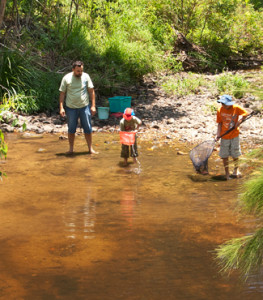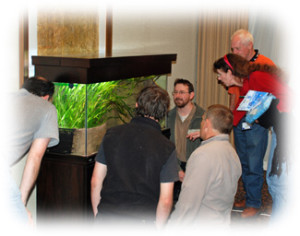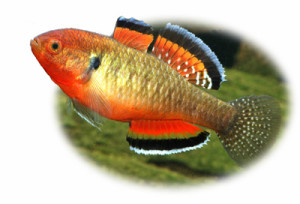
Kids love to explore Creeks. Some old Tandanus nests can be seen in the foreground. Photo© Gunther Schmida.
This article was originally posted in Bay Journal earlier this year, and is reposted here with permission from the editor. While the story comes from the Susquehanna River in the Chesapeake Bay area I thought it was good to read about others encouraging stewardship of waterways and native fish in the same way that ANGFA does, especially because they're getting kids involved.
*************
Recently, Susquehanna River smallmouth bass made front page news in a rare headline about wildlife. It is not good news. The river's juvenile smallmouth bass population has crashed and the remaining adults are sick. It's an issue that has sparked heated debate among scientists, activists and policy makers.
In spite of the dire news, I feel hopeful. Perhaps it's because I'm leading the elementary school environmental club which meets each year during the winter months. It is rewarding to watch these third–, fourth– and fifth-graders gain an understanding of how actions taken in our town can affect wildlife in the nearby river and as far away as the Chesapeake Bay.
My optimism also stems from watching my 11-year-old son enjoy his hobby — tending a 55-gallon freshwater aquarium. His new interest began after a friend decided to part with the fish tank. My son cleaned it and couldn't wait to fill it with finny friends. But that was not to occur until he did some research.
He poured over books and websites about setting up and caring for aquariums. He learned about fresh, salt and brackish water fish, and became a fountain of knowledge about predators and prey, pH and alkalinity, heating and filtration, and fins and gills.
He also learned about the nitrogen cycle — the chain of chemical reactions that take place after a fish enters the water. During this vital and life-giving process, omnipresent and beneficial bacteria eat harmful ammonia produced by fish depositing waste into the aquarium. When things work right, a chemical and biological balance is maintained and vibrant fish thrive within this miniature ecosystem. When the balance is not achieved, you get floating fish.
Recognizing that every fish has a role to play in maintaining the aquarium's ecological balance, my son gradually selected appropriate fish to inhabit the top, middle and bottom of the tank. A little catfish, who I call "The Onceler" after my favorite environmental tome, removes leftover food and waste from the bottom of the tank. Another type of catfish eats algae that accumulates on the glass.
Never in my wildest dreams could I have imagined a hobby that would connect my son so deeply with the natural world. It has also nurtured reading and social skills gained through the many conversations with pet store employees for whom he has questions.
Math and science also come into play as my son tests the water for pH, ammonia and nitrate levels and then calculates water treatments needed based on gallons in the tank. Keeping track of this information calls upon critical thinking skills required for identifying trends that coincide with events in the aquarium.
The neatest thing is, he will never look at a river or stream again without wondering what is going on beneath the surface. It's something special that isn't duplicated at his school, although in some places, it is.
Specifically, this type of hands-on environmental instruction takes place around the Chesapeake Bay watershed in 225 Pennsylvania classrooms, 205 Virginia classrooms and 60 Maryland classrooms through Trout in the Classroom, an education program sponsored by Trout Unlimited in partnership with natural resource agencies and local non-profit organizations.
Designed to be incorporated into the curriculum for grades K-12, Trout in the Classroom teaches students to raise trout from eggs to fry, monitor tank water quality, and learn an appreciation for stream habitats and water resources. Most programs end with the students releasing their trout in a state-approved stream.
Participating teachers tailor the program to fit their curriculum. Some stick to the nuts and bolts of trout life cycles and the local watershed. Others incorporate the program into disciplines including social studies, mathematics, language arts, fine arts and physical education.
Trout in the Classroom also reflects a trend to teach science, technology, engineering and math in ways that better connect students with the real world. Known as STEM, this movement fosters an interest for future schooling and careers in a world projected to have a growing need for scientists and mathematicians prepared to handle challenges posed by increasing demands for energy and clean water, and landscapes affected by a changing climate.
My son, the kids in my club and the lucky Trout in the Classroom students are right on track in this regard with an awareness of nature's interconnectedness and a growing conservation ethic. Wondering about what important causes they will champion when it comes to be their time to lead is what gives me hope entering a new year. It won't be in time for the current smallmouth bass crisis, but I do feel confident that help is on the way.
By Sara Kaplaniak, originally posted in Bay Journal
Copyright ©2013 Bay Journal












